Stop guessing, a wrong choice could increase your costs by 50%
Have a perfect design in hand, but you are stuck at the first step of manufacturing: laser cutting orCNC machining?Many people intuitively think that "one is always more expensive than the other", but this is often adangerous cost trap! The truth is:there is no standard answer, and choosing the wrong method may cause costs to soar by 30% or even 50%.
Material waste, processing delays, additional processes... The cost of the wrong choice is far more than you can imagine. The simple conclusion that "laser cuttingmust be expensive" or "CNC is always cost-effective" is simply untenable. The cost depends entirely on the details of your project:
- Material type and thickness?
- Part complexity and precision requirements?
- Production batch size?
- Surface finish requirements?
So, is laser cutting really more expensive than CNC? The answer is not a simple "yes" or "no".The key is to understand the cost drivers of both and accurately match your project needs.A correct decision based on the characteristics of the project is the key to saving time and money.
Stop guessing! Next, we will break down the true cost structure of laser cutting and CNC machining, revealing when laser is more economical and when CNC is the wise choice, to help you find the best solution.
Laser Cutting VS CNC Machining: Quick Selection Guide
| Decision Factors | Choose Laser Cutting | Choose CNC Machining |
|---|---|---|
| Part Shape | Complex 2D flat contours, fine patterns/hollowing | 3D shapes, deep cavities, blind holes, threads, complex curves or strict vertical sidewalls |
| Material Type | Thin sheets (metal, acrylic, wood, paper, fabric, leather) | Thick materials (metal blocks, engineering plastics such as PEEK/Nylon, composites, wood blocks), need to process solid blanks |
| Material Thickness | Thin materials have obvious advantages (usually < 25mm, depending on the material and laser power) | Strong thick material processing capabilities (almost unlimited thickness, capacity depends on the machine tool) |
| Processing Speed | Very fast plane cutting (especially simple contours), suitable for large-scale plane cutting | Relatively slow (especially complex 3D shapes, multiple processes), material removal rate is the bottleneck |
| Precision requirements | High precision (up to ±0.1mm or higher), but heat affected zone (HAZ) may cause edge micro melting/discoloration | Extremely high precision (up to micron tolerances), cold processing provides better dimensional stability and surface integrity |
| Thermal influence | There is thermal influence: slag, thermal deformation, material carbonization/denaturation may be generated | Basically no thermal influence: mechanical cutting, suitable for heat-sensitive materials |
| Typical cost driver | The unit time operation cost may be lower, large batches of simple flat parts are usually cheaper | Equipment/tool costs are high, programming is complex, small batches of complex three-dimensional parts or high-precision parts may be more cost-effective |
| Key advantages summary | Speed (2D), complex flat patterns, thin material cutting, non-contact processing | Three-dimensional forming capabilities, high precision/tolerance, wide material adaptability (thick/hard materials), excellent surface quality/verticality |
This guide will give you an in-depth understanding of the essential differences between the two technologies, analyze the core variables that affect the final laser cutting price andCNC price, and through a real case, let you clearly see how we choose the best solution for our customers.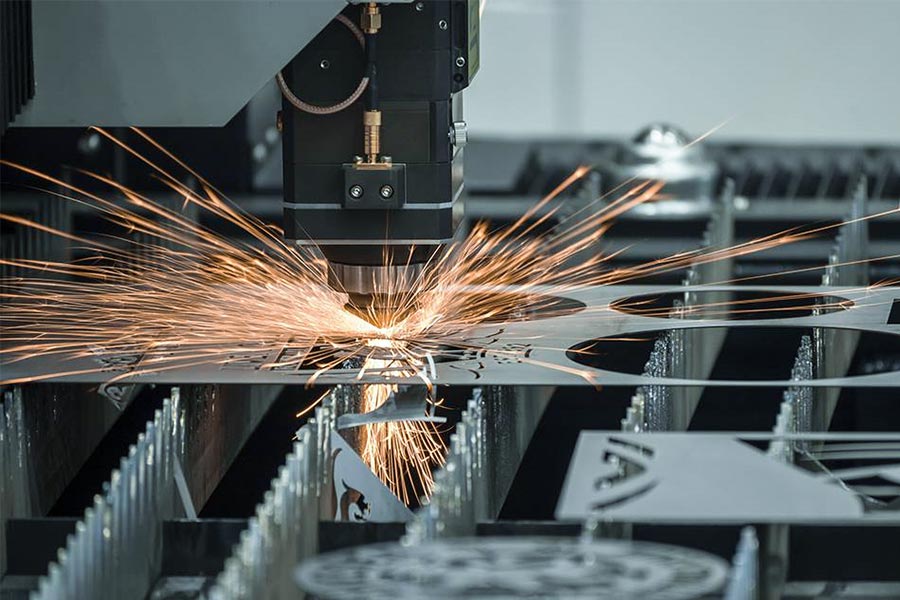
Here’s What You’ll Learn
- A simple “material + design” framework that allows you to determine which process is more economical in 30 seconds.
- The essential difference between theworking principles of laserand CNC:focused beam vs. rotating tool, and how this fundamentally affects the cost.
- The “sweet spot” rule of material thickness and type:why laser wins for thin plates and CNC saves for thick blocks.
- The cost code of design complexity:choose laser for 2D fine patterns, and CNC must be chosen for 3D features/threaded holes.
- Disassembling costs from actual cases:how a small change in the design of an aluminum panel can make the economic choice shift from laser to CNC.
- Beyond the thinking of “buying a machine”:the right strategy for choosingprocessing services(not equipment) for enterprises.
- Authoritative answer:Is the operating cost of laser really high? Is the final conclusion that CNC is cheaper?
Now, let’s clear the fog of cost and gain a deeper understanding of the economics of laser cutting and CNC machining so you can make the smartest choice for your project.
Why Trust Our Analysis? We Own Both The Beam And The Tool
Hi, I’m Gloria, an engineer at LS.
People often ask why we can trust our processing recommendations, especially when we have high-poweredlaser cutting machinesand high-precision CNC machiningcenters side by side in our workshop.
The answer is simple: we don’t “stand for” any one technology.As alaser cutting expert, I know the efficiency and accuracy of the beam on complex contours, and as a CNC expert, I am also proficient in tool path optimization and precision milling. This dual identity makes us unbiased.
Our only goal is to find the most efficient and economical processing solution for your specific part.This confidence comes from practice - from thousands of projects I have participated in. I have witnessed and accumulated real-life data and experience on laser and CNC performance in various materials, thicknesses, shapes and production volumes. I know when the non-contact and speed of laser is king, and I know when the multi-faceted processing capabilities of CNC are better.
So when you ask us for a quote, you are not getting a sales pitch,but an engineering solution based on deep practice and tailored by our engineers.We will carefully analyze your drawings, materials, tolerances, batches, and application requirements, and then objectively use the capabilities of the two "powerful tools" in the workshop to make the best recommendations for you.
Trust LS's analysisbecause we are loyal to only one thing: finding the best manufacturing path for you.Feel free to talk to me about your parts!
Laser cutting vs. CNC Machining (Milling): Focused Beam VS. Rotating Tool
To understand the cost difference, you first need to understand how they work.Laser cutting and CNC machining (especially milling) are two widely used technologies in modern manufacturing, but their core mechanisms for material forming are completely different, which leads to their unique advantages, limitations and application scenarios.The most fundamental difference is that laser cutting uses a focused high-energy beam for thermal processing, whileCNC millingrelies on high-speed rotating physical tools for mechanical cutting.
A quick summary of the core essential differences
| Features | Laser Cutting | CNC Machining |
|---|---|---|
| Core tools | Focused high-energy laser beam (photon energy) | High-speed rotating physical tool (such as milling cutter, drill) |
| Mode of action | Non-contact | Contact |
| Processing principle | Thermal processing: melting, burning, vaporizing materials | Mechanical processing: physical cutting, stripping materials |
| Energy form | Light energy (converted into heat energy) | Mechanical kinetic energy |
| Typical characteristics | Narrow kerf, heat-affected zone (relatively small), fast speed | Three-dimensional processing capability, extremely high precision, wide material adaptability |
| Material removal | Auxiliary gas blows away molten/vaporized material | Direct cutting by tool produces chips |
Laser Cutting:
Working principle:
- High-power laser (such as CO2 laser, fiber laser) is focused into a tiny light spot with extremely high energy density (the focal diameter is usually a few tenths of a millimeter) through a precision optical system.
- This high-energy light spot irradiates the surface of the material, causing the local material temperature to rise sharply in a very short time (milliseconds or even microseconds), reaching a state of melting, burning (oxidation) or direct vaporization.
- At the same time, a stream of auxiliary gas (such as oxygen, nitrogen, air) coaxial with the laser beam is blown toward the incision at high pressure. Oxygen is used to assist combustion to increase the cutting speed and thickness (for metals) and produce an oxidation reaction; inert gases (such as nitrogen) are used to blow away the melt and protect the incision from oxidation (commonly used for stainless steel and aluminum); air is often used for non-metallic cutting.
- The CNC system accurately controls the movement trajectory of the laser focus and the auxiliary gas nozzle relative to the material, so that the material is "burned through" and separated along a predetermined path to form an incision.
Core advantages:
- Fast speed:Especially for thin plate materials, the cutting speed is much higher than mechanical processing.
- Narrow kerf: The laser beam focal point is extremely small, and the resulting kerf is very narrow (usually around 0.1mm - 0.3mm), with high material utilization.
- Small heat-affected zone:Although it is essentially a thermal process, the energy is highly concentrated and the action time is extremely short, so the heat conduction to the surrounding area is relatively small (especially when using fiber laser to cut thin plates).
- Non-contact processing:No physical tool contacts the workpiece, avoiding force deformation and vibration problems caused by tool wear, and there is no need to consider tool rigidity limitations.
- Complex two-dimensional patterns:Extremely good at cutting any complex two-dimensional contours, fine holes and fine patterns.
- High flexibility:Changing the cutting pattern only requires changing the program, without changing the physical tool.
2. CNC machining - milling (CNC Milling):
Working principle:
- Use physical tools (milling cutters, drills, taps, boring tools, etc.) that rotate at high speeds precisely controlled by a computer numerical control (CNC) system.
- The tool has a specific geometry (cutting edge). The spindle drives the tool to rotate at high speed (the speed can reach thousands or even tens of thousands of RPM), while the CNC system controls the workpiece or tool (or both) to move precisely in three (or more) axes, X, Y, and Z.
- The rotating cutting edge mechanically forces the workpiece material to cut in, squeeze, and peel off, producing chips. This is a continuous mechanical force process.By programming and controlling parameters such as tool path, speed, feed rate, cutting depth, etc., the excess material on the workpiece is gradually removed, and the desired two-dimensional or three-dimensional geometry is finally obtained.
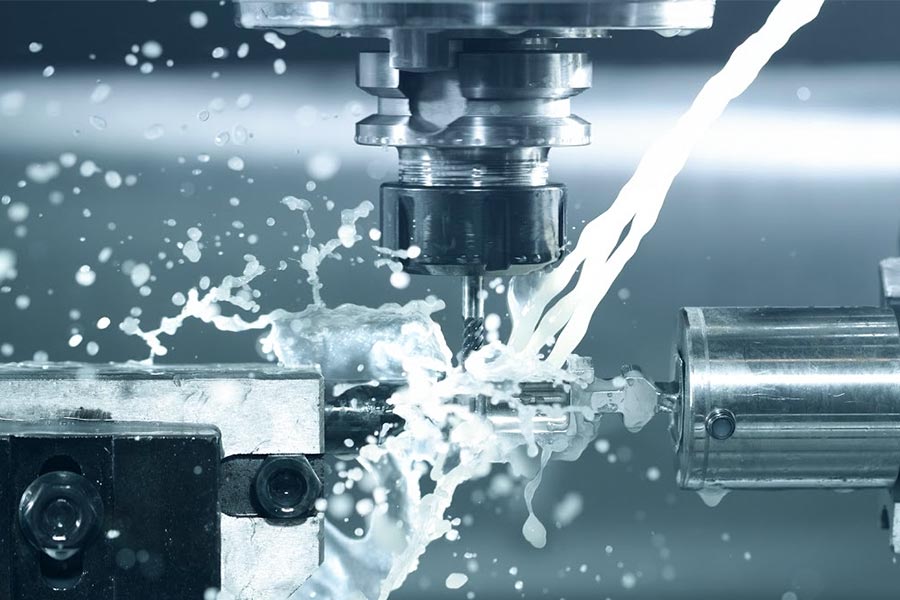
Core advantages:
- Extremely high precision and surface quality:It can achieve micron-level dimensional accuracy and very excellent surface finish (low Ra value), suitable for high-precision parts.
- True three-dimensional geometry processing:Core advantages! It can produce complex curved surfaces, cavities, bosses, threaded holes and other three-dimensional features, which cannot be achieved by laser cutting.
- Extremely wide range of materials:Almost all solid engineering materials can be processed, including various metals (hard-to-process materials such as carbide and titanium alloy), plastics, composite materials, wood, etc., as long as the right tools and parameters are selected. It is not sensitive to the optical properties of the material (such as reflectivity and absorptivity).
- Versatility:The same equipment (by changing tools) can complete a variety of processing operations such as milling,drilling, tapping, boring, and engraving.
- Good edge quality:The processed edge usually has no heat-affected zone (for metals), and the mechanical properties are closer to the parent material (unless work hardening occurs). The inner wall of the hole has high quality.
- Large thickness processing capability:Through layered milling, solid materials of any thickness can theoretically be processed.
Cost Showdown Round 1: Material VS. Thickness
Material selection and thickness range are the most critical factors in determining the cost-effectiveness of laser cutting and CNC machining. Laser cutting has an overwhelming cost advantage in the field of thin plates (especially non-metal and thin metal) due to its speed and accuracy; while CNC machining becomes a more cost-effective choice when processing thick metal blocks, engineering plastics andaluminum blocksdue to its stable cutting ability and avoidance of thermal damage.Choosing the right process will immediately show the difference in cost.
1. The “sweet spot” of laser cutting
(1) Thin metal plates (0.5mm - 10mm):
- Speed wins:Laser cutting speedis extremely fast within this thickness range, and the processing volume per unit time is much higher than CNC.
- Non-contact, low energy consumption:Non-contact processing reduces tool wear and energy consumption is relatively low.
- Significant cost advantage:Considering speed and operating costs, thecost of laser cuttingthin metals is much lower than CNC milling, which is its most competitive area.
(2) Acrylic, wood, plywood, etc.:
- Extreme speed and smooth/characteristic edges:Laser can instantly vaporize or melt these materials, and the cutting speed is unparalleled. The edge can be automatically melted smooth (acrylic) or produce a specific charred aesthetic effect (wood), eliminating the secondary grinding process and directly reducing costs.
- Precision and complexity without pressure:Easily handle extremely fine patterns and complex contours.
(3) Soft and thin materials such as paper, fabric, and leather:
- The only feasible solution:CNC's physical cutters will pull, deform, or damage these flexible materials, making it difficult to perform fine cutting.
- Fine and contactless:Lasers can achieve contactless, ultra-fine cutting (such as hollow patterns and precise cutting) at extremely high speeds, and are irreplaceable in terms of cost and quality.
2. The "home field" of CNC machining
(1) Thick metal blocks (>20mm):
- Laser efficiency plummets:When cutting thick metal, the laser needs to penetrate slowly multiple times, energy consumption increases dramatically, speed drops significantly, and it may even fail to cut through or the quality is poor.
- CNC stable cutting:CNC removes materials stably through physical cutting, and its efficiency is relatively less affected by the increase in thickness, and it can reliably process very thick workpieces.
- Cost reversal:In this area, the efficiency and reliability of CNC make its cost much lower than the troubled laser cutting.
(2) Engineering plastics (POM/Delrin, PEEK, Nylon, etc.):
- Laser thermal damage problem:The heat of the high-energy laser beam can cause these materials to melt, burn, produce toxic gases or form rough, carbonized ugly cutting edges, with low yield and high post-processing costs.
- Advantages of CNC cold cutting:CNC uses sharp tools to perform "cold" cutting (compared to laser), which can produce clean and precise edges, avoid thermal damage, ensure quality and efficiency, and significantly reduce overall costs.
(3) Aluminum block:
- Limitations of laser:Although high-power lasers can cut aluminum, they face reflection risks (damage to equipment), slow speed (especially for thick materials), rough cutting edges (requires post-processing), and high energy consumption.
- Efficiency and flexibility of CNC:CNC aluminum processingis a mature process with high efficiency. It can easily complete multiple operations such as cutting, milling, drilling, tapping, etc., with good surface quality, higher overall processing efficiency and flexibility, and more advantages in overall cost.
The bill of materials and thickness specifications are the first gates of cost control.Laser is selected for thin (<10mm metal, various non-metals), CNC is selected for thick (>20mm metal) and thermal (engineering plastics), and CNC is better for aluminum block processing.A deep understanding of the natural "sweet spot" and "forbidden zone" of these two processes in terms of materials and thickness is the cornerstone of making the most cost-effective manufacturing decisions. Accurately evaluating these two points at the beginning of the project can lock in the most economical production process and win the key first round for cost control.
Design Complexity And Precision: The Second Battlefield Of Cost Confrontation
The complexity characteristics of the design drawings (two-dimensional details vs. three-dimensional structures) and precision requirements are the second core factors driving the cost difference between laser cutting and CNC machining. Laser cutting has natural speed and cost advantages in finetwo-dimensional patterns and sharp internal angles; while CNC machining is irreplaceable in the fields ofthree-dimensional features, threaded holes and ultra-high precision tolerances(±0.05mm or higher), becoming the inevitable choice for the manufacture of complex functional parts.Design determines the process, and the process locks the cost.
1. When the design requires laser cutting: The low-cost king of two-dimensional complexity
(1) Fine and complex two-dimensional patterns (such as lace metal screens, dense grilles, hollow patterns):
- The efficiency miracle of "one stroke":The laser beam can continuously and quickly cut complex contours. No matter how tortuous the lines are or how dense the holes are, its path efficiency is extremely high.
- CNC's "path nightmare":CNC needs to drive the tool to cut along the inner and outer contours of the pattern one by one. For extremely complex patterns, the tool path is extremely long, the tool is frequently raised and lowered, the processing time increases sharply, and the cost rises sharply.
- Dramatic cost savings:The speed and efficiency of the laser in this type of design make it significantly cheaper compared to CNC, its undisputed domain.
(2) Extremely sharp inner angles (almost 90 degrees):
- Beam diameter determines the outcome:The spot diameter of the laser is extremely small (can be below 0.1mm), making it cut extremely sharp and defined inner angles without difficulty.
- CNC tool radius constraint:CNC employs round rotary tools, and the inner corner's minimum radius is constrained by the diameter of the tool (minimum radius ≥ tool radius). In order to achieve a smaller inner angle, a thinner tool would need to be employed, but the thinning tool lacks rigidity, is prone to breakage, and has slow feeding, contributing significantly to processing time and risk cost.
- Win-win in cost and quality:Lasers enjoy speed, quality, and cost benefits in cutting acute inner corners.
2. Where the design requires CNC machining: ultra-precision and three-dimensional benefits
(1) Three-dimensional features (bevels, curved surfaces, grooves, steps, reliefs, etc.):
- Dimensional constraints of lasers:Conventional laser cutting machines can cut in a two-dimensional plane only (some 3D lasers can produce simple curved surfaces, but application and cost are not unlimited). It cannot produce features that vary in the Z-axis direction.
- Multi-axis versatility of CNC:CNC milling centers(especially 3-axis, 4-axis, and5-axis) can accurately mill various intricate three-dimensional surface and structural features by tool movement in the X, Y, and Z axes and workpiece/tool rotation. It is the sole economically feasible method of obtaining useful three-dimensional design.
(2) Threaded holes (internal threads):
- Laser's "mission impossible":Laser cutting will not directly produce internal threads with true tooth shape and strength. It can only produce light holes.
- General operation of CNC:CNC will directly machine high-precision and high-strength internal threads on the workpiece by tapping (using taps) or more general-purposethread milling(with thread milling cutters). It is a general and cost-saving process to manufacture threaded holes for assembly.
(3) Extremely high tolerance requirements (±0.05mm or higher):
- Laser thermal deformation test:The heat-affected zone (HAZ) of laser cutting can lead to micro-deformation of the material, and the absolute accuracy of its positioning and optical path system is generally difficult to steadily achieve ultra-high levels (±0.05mm or higher).
- Mechanical precision citadel of CNC:Very high degree of dimensional accuracy and position accuracy (far better than ±0.05mm) is achievable and achieved by present-day precisionCNC machine toolsthrough rigid mechanical structure, high-resolution feedback mechanism, and advanced motion control.
- Cost and accuracy are inseparable:When such ultra-high accuracies are required by the design, CNC is usually the sole economically feasible (or even viable) technique which can meet the requirement. Choosing laser may result in prohibitive scrap rate, rising post-processing cost or even inability to meet the requirement.
Design drawings are the invisible codebook of cost. Key points for reading drawings:
Look at the dimensions: Purely two-dimensional complex patterns/sharp angles? → Laser has a better cost.
Look at the structure: Are there three-dimensional curved surfaces/cavities/steps? → CNC is a must.
Look at the connection: Need reliable threaded holes? → CNC is the main choice.
Look at the accuracy: Tolerance is stricter than ±0.05mm? → CNC is more reliable.
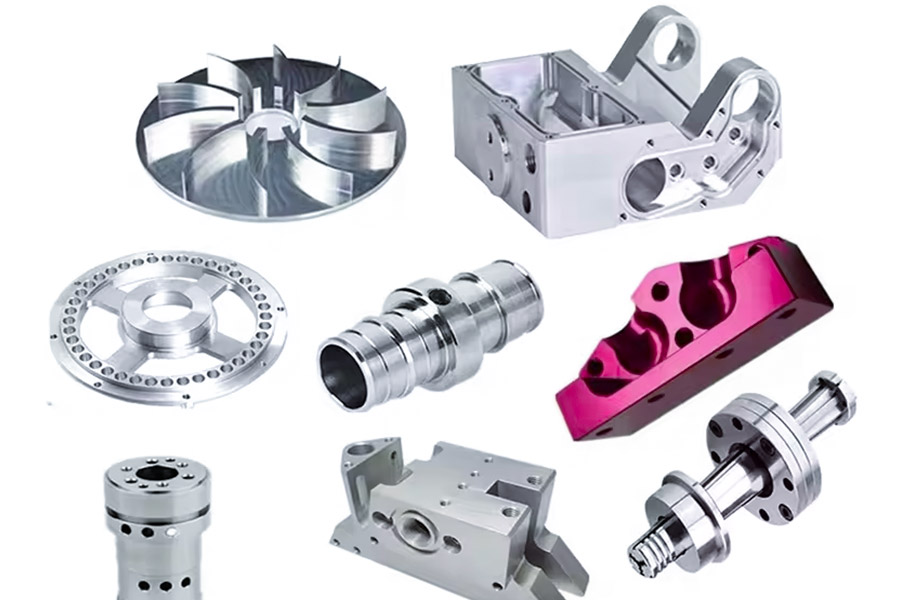
Beyond The Two: When Should You Consider Waterjet Or Plasma Cutting?
While laser cutting and CNC machining dominate the mainstream, smart manufacturers know they need variety in their toolbox. Waterjet andplasma cuttingare powerful answers to specific manufacturing challenges. When should you consider them? The following table provides a quick guide:
| Dimensions | Water jet cutting | Plasma cutting |
|---|---|---|
| Core advantages | Cold cutting, strong material versatility | High speed, low cost |
| Best applicable materials | Heat-sensitive materials (titanium, aluminum, plastic), composite materials, reflective materials (copper, brass), stone/glass | Conductive metals (steel, stainless steel, aluminum - requires a dedicated system) |
| Thickness range of expertise | Very wide (0.1mm - 200mm+ Especially good at ultra-thick plates) | Medium to ultra-thick (usually >3mm, up to 150mm+) |
| Heat impact | No (cold cutting process) | Yes (obvious heat-affected zone) |
| Typical application scenarios | Aerospace parts, precision medical equipment, food processing knives, artwork, laminated materials | Building steel structures, mechanical frames, hoppers, storage tanks, blank blanking, scrap removal |
When to choose water jet?
- Materials afraid of heat:Avoid thermal deformation/hardening when cutting titanium alloys,aluminum alloys, plastics, and composite materials.
- Reflective materials:Cutting reflective materials such as copper and brass that are difficult for lasers to process.
- Extra-thick materials:Stable cutting of extremely thick materials (50mm - 200mm+) when lasers are inefficient or unable to process.
- Require cold cutting + high precision:When precise contours are required and absolutely no heat effects.
When to choose plasma?
- Thick metal, speed + saving:Fast, low-cost cutting of medium to extra-thick conductive metals (especially carbon steel).
- Edge quality is not the priority:Cutting edges can accept secondary processing (such as grinding) or the heat-affected zone can be tolerated.
- Blank cutting/heavy industry:Scenarios such as steel structures and mechanical frames that require efficient segmentation of thick plates.
Mature manufacturers know this well: there is no universal technology, only the best tool for a specific problem. Including water jet and plasma in your technology portfolio means that when facing heat-sensitive materials, ultra-thick challenges, reflection problems or economic requirements for large-scale thick metal cutting, you have a winning weapon that goes beyond the limitations of laser and CNC. The real manufacturing wisdom lies in matching the most accurate key for each unique challenge.
Practical Case Analysis: The Road To Cost Optimization Of A Custom Panel
Today I would like to share with you a very inspiring practical case we experienced recently, which clearly shows how product design details directly affect the manufacturing process selection and the final cost.
Project background:
We customized 500 aluminum front panels with specifications of 200x150mm for a new product of an electronic equipment company.
Version A (basic design):
- Design: 3mm thick aluminum plate, including circular mounting holes and square screen openings (both 2D features).
- Our process evaluation and cost analysis:
- Laser cutting: Simple setup and fast cutting speed. The estimated cost per piece is about $8.
- CNC machining: Requires programming, clamping and milling of contours and holes, which is less efficient. The estimated cost per piece is about $15.
- Conclusion and results: The laser cutting solution has a significant cost advantage (saving $7 per piece), becoming a clear choice, saving the customer $3,500 in total costs.
Version B (design iteration):
- Design changes:Chamfers were added on the panel edge, and milling was performed on the rear end to make grooves for mounting the seal ring (adding major 3D characteristics).
- We re-evaluated the process and cost:
- Laser cutting + CNC secondary processing:Laser cutting needs to cut the shape first, then delegate to CNC to process grooves and chamfers. With two processes and two clampings, it is inefficient and at high cumulative costs. The piece price rose to about $22.
- Clean CNC machining:Though not as quick as laser, any 2D cut-outs, 3D fillets and back grooves can be performed in one clamping. The price per part is estimated at about $18.
- Conclusion and turning point:Due to the inclusion of 3D characteristics such as chamfers and grooves in the design, the otherwise "expensive" pure CNC solution has become a less expensive and more efficient (single process) alternative. Changes in design details have completely transformed the most economical route of manufacture.
Core revelation
This case truly illustrates how the details of a product's design (specifically the addition of 3D features) are closely linked with manufacturing cost. In version A, the simple 2D features render laser as the ideal solution; while the 3D features added in version B render integrated manufacturing (pure CNC) surpass the step-by-step processing solution in both efficiency and cost. It emphasizes the importance of taking into account the manufacturability and cost impact of the manufacturing process deeply at the product design stage. OurLS teamis very happy to come in to prevent cutting at the early stage of your product designing, to collectively check the process implementation path and cost potential of the design solution, and help you make the best decision.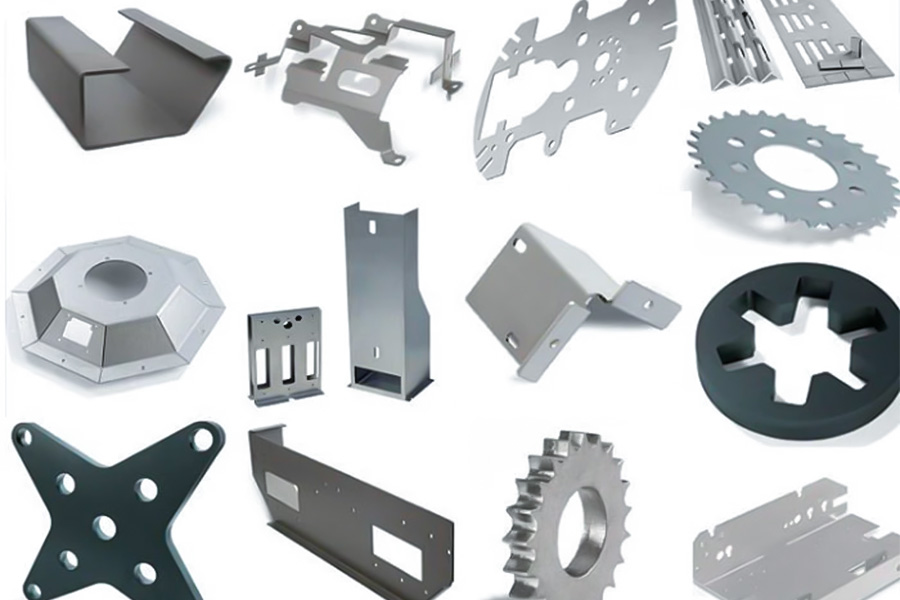
Should I Buy A CNC Or A Laser Engraving Machine? The Proper Approach For Businesses
Rather than considering "What to buy?", the proper question to consider is "What type of processing capabilities are my most important products and future intentions based on?"
1. Set core capability on products
Choose laser engraving/cutting, which is the major business for thin plate materials (leather, wood, thin metal), signs, personalized gifts, fine surface engraving (leather/fabric), and plane cutting. Its merits include fine graphics, high speed, and non-contact processing. It is the driving force for advertisement, cultural creativity, and personalized customization industries.
Select CNC: When primary business is three-dimensional parts, high-precision functional parts (tooling fixtures, precision mechanical parts, molds), deep relief, or heavy/diverse materials (engineering plastics, metal blocks) need to be processed. The advantages are three-dimensional processing, strict tolerance control, high-quality finish, and superb material adaptability. It serves as the basis for precision manufacturing, product research and development, and molds.
2. Best practice in the early stage: take up outsourcing (e.g., LS-type integrated service providers)
In most companies (especially start-ups, growth stages or product line search stages), to outsource production first is the most cost-effective and best solution:
Zero-risk startup: Avoid enormous equipment investment (hundreds of thousands to millions).
Zero-burden operation: Free from maintenance, consumables, upgrades, and dedicated operations' expense and energy, and focus on core business (design, marketing, sales).
Overall capability coverage: Instant access to in-depth technologies such asCNC precision machiningand laser efficient cutting/engraving, and respond in a flexible manner to diversified orders.
Trial and error at low cost: Test new products and small-batch production quickly without any risk of equipment idleness.
Access to advanced technology: Enjoy the most updated equipment and processes of professional service providers at a lower cost.
Conclusion
Ability matching products: Specify the ability requirements for your core products - choose laser for plane accuracy and CNC for three-dimensional accuracy.
Outsourcing first: Before the business scale is stable and definite processing requirements the absolute center and the burden always high, outsourcing (such as LS) a more reasonable and advantageous asset-light strategy.
Time to buy: Only if a certain capability is a constraint. in normal production and the price of outsourcing is significantly higher than self-purchasing, then think about buying equipment very cautiously.
Smart decision-making is to decide on the root capabilities that sustain the future. Use professional outsourcing as a platform well, and invest in equipment when demand is stable and natural. Focus on capabilities and go forward lightly.
FAQ - Final Question About Cost
1. Is CNC cheaper than laser cutting?
No, the process cost depends on the characteristics of the part. Laser cutting has significant advantages in two-dimensional processing of thin plates (usually <6mm): fast speed (up to 10 times that of CNC), no tool loss, and small material deformation. CNC is good at three-dimensional processing and cutting of thick materials (>10mm), and realizes complex structures through multi-axis linkage. The key cost watershed is usually in the 6-12mm thickness range, at which time it is necessary to comprehensively compare material utilization (laser nesting is more compact) and labor cost (CNC multi-process takes longer).
2. Is the laser cutting machine expensive to run?
The operating cost of industrial-grade equipment is relatively high. In addition to the explicit electricity cost (about 15-30 yuan per hour for 10kW-class equipment), laser gas (nitrogen accounts for 20%+ of the cost when cutting stainless steel), and optical lenses (about 2,000 yuan per month for replacement), it is also necessary to calculate the invisible costs: cooling system energy consumption, dust removal equipment maintenance, and professional technician salary. For example, high-pressure nitrogen protection is required for cutting stainless steel, and the gas cost may exceed 30% of the material cost. This is also the fundamental reason why professional service quotes are high - covering the full life cycle cost.
3. How to get the most accurate quote for the project?
Providing complete engineering files is the key starting point: Send CAD files (.dxf/.step, etc.) to service providers with laser + CNC dual processes, who can perform manufacturability analysis (DFM) simultaneously. Experts will evaluate: ① The impact of material type/thickness on process selection (such as reflective metal is not suitable for fiber laser) ② Batch effect (laser small batch is better, CNC large batch amortizes fixture costs) ③ Hidden costs (CNC clamping time/laser lead loss). The final quote will include process comparison solutions and optimization suggestions (such as adjusting the chamfer radius can reduce CNC costs by 30%).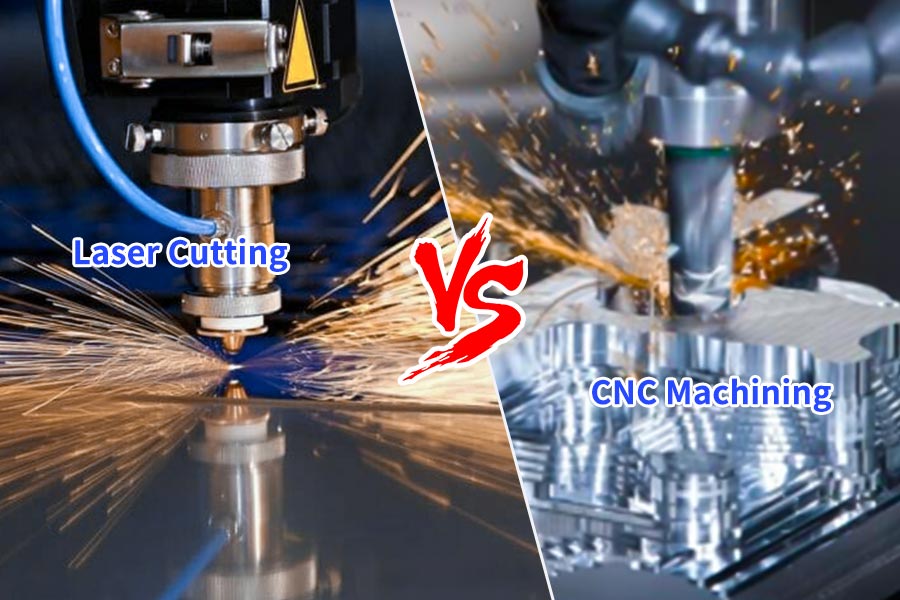
Summary
Laser cutting and CNC machining are never an either-or choice -they are the 'two heroes' in the manufacturing field, each guarding different territories.Metal sheets as thin as a cicada's wing bloom with efficiency under the laser knife (the cost can be as low as 1/3 of CNC), while thick and complex three-dimensional blanks are revitalized in CNC milling. The most expensive mistake is to let stainless steel sheets slowly carve onCNC machinetools, or force three-dimensional workpieces to accept the two-dimensional judgment of lasers.The real cost code is hidden in your design drawings: material thickness determines the battlefield, and geometric shapes select weapons.
Let professional eyes break the game for you
"End the game of process selection immediately!LS manufacturing expertteam is in place:
- Upload your CAD file→ Get a deep analysis of the manufacturability of dual processes in parallel
- Unlock the real cost comparison→ The system automatically calculates material loss rate, labor time premium, and batch sensitivity points
- Receive intelligent process solutions→ Accurately mark the key design features of "laser saves 30%" or "CNC reduces costs by 45%"
📞Tel: +86 185 6675 9667
📧Email: info@longshengmfg.com
🌐Website:https://lsrpf.com/
Disclaimer
The contents of this page are for informational purposes only.LS seriesThere are no representations or warranties, express or implied, as to the accuracy, completeness or validity of the information. It should not be inferred that a third-party supplier or manufacturer will provide performance parameters, geometric tolerances, specific design characteristics, material quality and type or workmanship through the LS network. It's the buyer's responsibilityRequire parts quotationIdentify specific requirements for these sections.Please contact us for more information.
LS Team
LS is an industry-leading companyFocus on custom manufacturing solutions. We have over 20 years of experience with over 5,000 customers, and we focus on high precisionCNC machining,Sheet metal manufacturing,3D printing,Injection molding,Metal stamping,and other one-stop manufacturing services.
Our factory is equipped with over 100 state-of-the-art 5-axis machining centers, ISO 9001:2015 certified. We provide fast, efficient and high-quality manufacturing solutions to customers in more than 150 countries around the world. Whether it is small volume production or large-scale customization, we can meet your needs with the fastest delivery within 24 hours. chooseLS technologyThis means selection efficiency, quality and professionalism.
To learn more, visit our website:www.lsrpf.com





